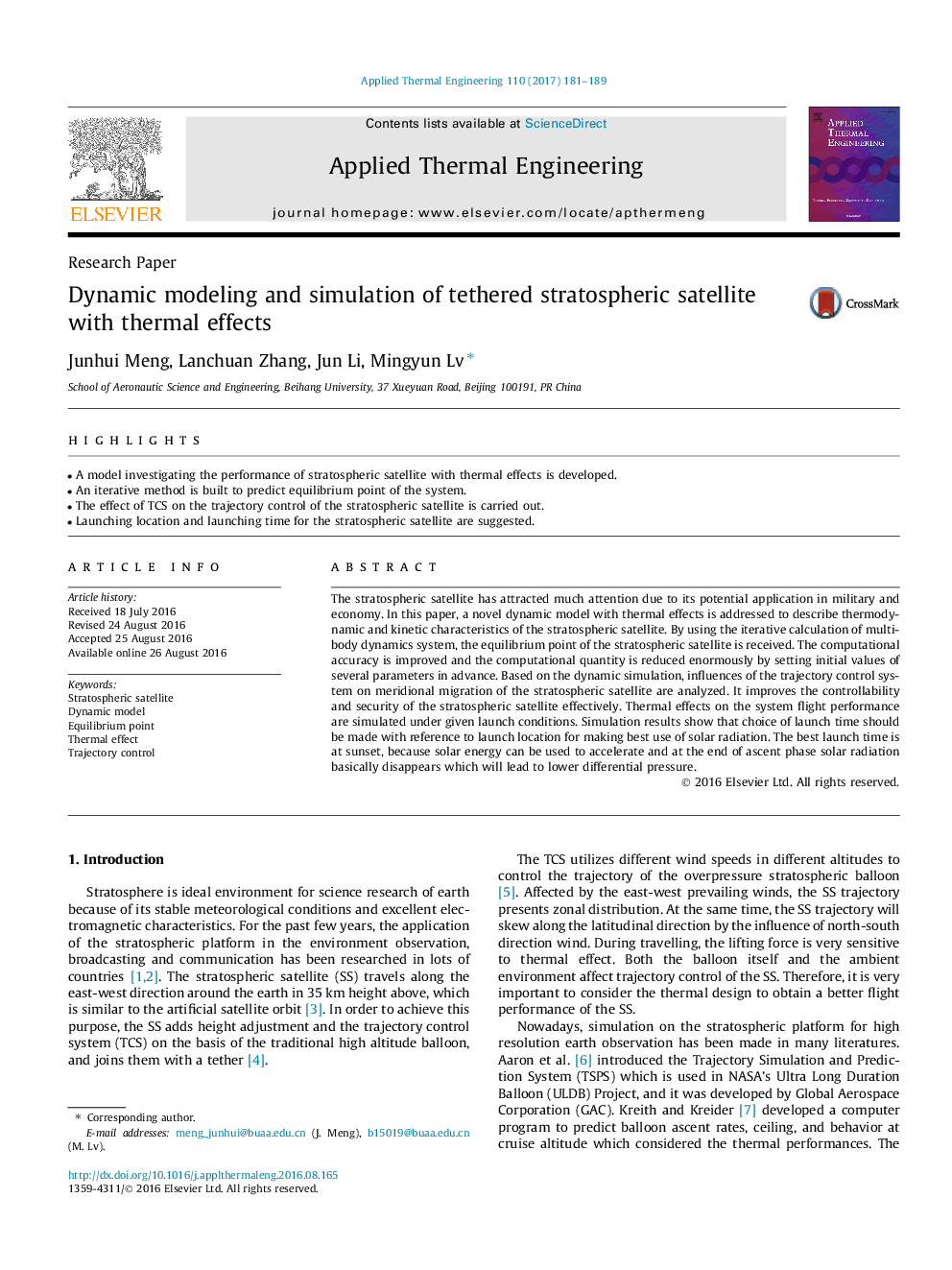| Article ID | Journal | Published Year | Pages | File Type |
|---|---|---|---|---|
| 4992006 | Applied Thermal Engineering | 2017 | 9 Pages |
Abstract
The stratospheric satellite has attracted much attention due to its potential application in military and economy. In this paper, a novel dynamic model with thermal effects is addressed to describe thermodynamic and kinetic characteristics of the stratospheric satellite. By using the iterative calculation of multi-body dynamics system, the equilibrium point of the stratospheric satellite is received. The computational accuracy is improved and the computational quantity is reduced enormously by setting initial values of several parameters in advance. Based on the dynamic simulation, influences of the trajectory control system on meridional migration of the stratospheric satellite are analyzed. It improves the controllability and security of the stratospheric satellite effectively. Thermal effects on the system flight performance are simulated under given launch conditions. Simulation results show that choice of launch time should be made with reference to launch location for making best use of solar radiation. The best launch time is at sunset, because solar energy can be used to accelerate and at the end of ascent phase solar radiation basically disappears which will lead to lower differential pressure.
Related Topics
Physical Sciences and Engineering
Chemical Engineering
Fluid Flow and Transfer Processes
Authors
Junhui Meng, Lanchuan Zhang, Jun Li, Mingyun Lv,
